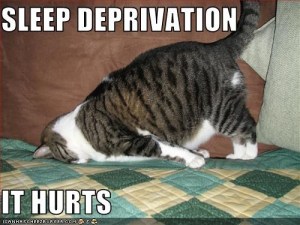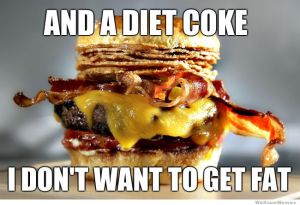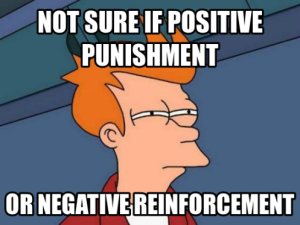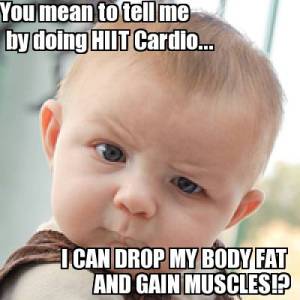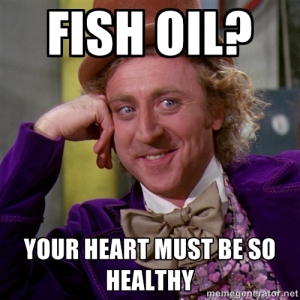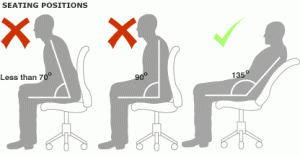Today’s blog post is about sleep – one of the most underrated things we can adjust to hinder or help our fitness goals and fat loss.
SLEEP 101 – the Bad.
Let’s be realistic – how we eat and how we exercise are probably the two biggest contributors to how we look and how we measure, physically. I won’t argue that. There are also many factors outside of these two things that also contribute. I’d like to discuss one of the biggest ones: sleep! (Hint: It’s probably the most overlooked reason).
It’s not always how much we sleep, but it’s a combination of both quality and quantity that can equate to proper hormonal responses, fat loss, and all of the other great benefits of proper sleep that we can achieve.
Let’s touch base on Cortisol first. It’s such an evil word, I feel bad even typing it! Cortisol is a hormone in our body that breaks down tissues. In stressful times (including dieting), the body’s cortisol levels can be higher as the body is preparing for fight or flight status. This can cause the body to store fat as a response!
There’s a cool study in the Laboratory of Physiology in Belgium that showed daytime cortisol levels were higher in those that short themselves of sleep.
Another negative to lack of sleep is glucose control. Let’s face it, when we can’t sleep, we get hungry and no one ever says “I can’t sleep, let’s go chow on some broccoli.” It just doesn’t happen! Usually CARBS are the culprit of these cravings. There’s a great study done in Chicago (my home!) that showed sleep deprivation can lead to increased hunger and appetite!
In all likelihood, our sneaky little bodies sense fatigue and think it’s a low energy supply, queuing internal drives to chow down on some carbs.
And my last rant here – if we don’t sleep enough, our workouts SUCK. I can quote research on this all day, but I think most of us can confirm that knowingly already.
An interesting tidbit.
Here’s a quick fact I learned on sleep and car accidents:
A study was done on car accidents the week following daylight savings time in the Spring and Fall.
In the Spring when we lost an hour, car accidents were up 10% approximately for up to two days after the time change.
In the Fall, when we gained an hour of sleep, car accident rates were reduced by 8-10% in the 2 days following. Personally, I think more accidents occur in the fall anyways, so this research is VERY telling.
Pretty interesting, huh?
2 Strategies for better quality of sleep.
I am going to share a few strategies I’ve learned from books, lectures, etc. i’ve researched over the years that have made a huge impact on quality of sleep for my clients.
1. Make it a priority!
Make sure you get 7.5 hours per day. Carve it out in your calendar if you must. Here’s a cool idea: Find 10 minutes per day and add it into your sleep time. This could mean:
- Sleeping later in the morning
- not finishing that netflix rerun at night
- taking a powernap
Why? Remember that tidbit about the car accidents? Now you’ve just added an extra hour per week to your sleep. That can really have a positive effect on how you sleep.
2. Protect your fort of sleeping.
Design your own fort of sleeping. Get rid of your i-this and i-that. Research says you’ll fall asleep faster.
Let’s start here. Try these two strategies and over a 4-6 week period jot some notes down on energy levels, weight, and overall mood. I’m willing to bet you’ll feel much better if you look these things over.
-Darin Hulslander, CSCS, Precision Nutrition Level 1/2
http://www.thisisperformance.com – first week of online training free.
For all your performance, mobility, and nutrition needs.
Sources:
- Copinschi, G. (2005). Metabolic and endocrine effects of sleep deprivation. Essent Psychopharmacol. 6(6):341-7.
- Murphy, HM., & Wideman, CH. (2009). Constant light induced alterations in melatonin levels, food intake, feed efficiency, visceral adiposity, and circadian rhythms in rats. Oct;12(5):233-40.
- Leproult, R., & Van Cauter, E. (2010). Role of Sleep and Sleep Loss In Hormonal Release and Metabolism. Endocrine Development. 17:11-21.
- Coren, Stanley. Sleep Thieves: An Eye-opening Exploration into the Science and Mysteries of Sleep. New York, NY: Free, 1996. Print.
